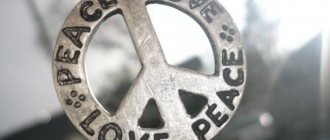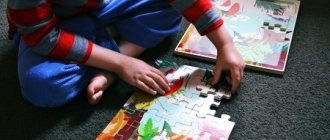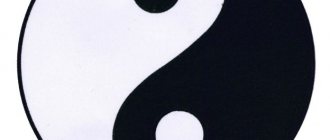General ideas about analytical psychology and its directions
One of the areas of neo-Freudianism, which was developed thanks to the research of the Swiss psychiatrist Jung, is analytical psychology, whose main goal of study is the improvement of the individual in the process of forming its integrity, in which harmonization and cooperation of consciousness and the unconscious person occurs.
This goal is in the field of studying the irrational side of human life and is directly related to certain symbols, since it is thanks to their existence and impact on a person’s personality that the process of combining conscious and unconscious contents is possible.
Personality structure according to the theory of Carl Jung
In his theory, Carl Jung identified three components that make up the whole of a person’s personality:
Are you an expert in this subject area? We invite you to become the author of the Directory Working Conditions
- consciousness or ego;
- individual unconscious;
- collective unconscious.
Let's look at them in more detail.
The ego represents the consciousness of a person and everything that a person means when talking about himself: “I”. The basic elements of the Ego are sensations, memories, thoughts and perceptions. The main function of the Ego is the process of a person’s self-identification as an individual and separation of himself from other people and society as a whole. In fact, we can say that the Ego is the center of personality, around which all the necessary structures and components are formed, which are the source of the harmonious development of a person’s personality.
The individual unconscious is the area of the unconscious and consists of elements that were previously at the level of human consciousness, but over time were forgotten or were repressed due to their social inapplicability or the person’s desire to forget and suppress traumatic phenomena and behavioral reactions. The personal unconscious has in its structure the following components: memories (both childhood and a person’s conscious life), sensations, fears, impulses and desires, perception of the surrounding world and reality, through the prism of a person’s experience and formed patterns of behavior.
Finished works on a similar topic
Coursework Archetype and symbol 460 ₽ Essay Archetype and symbol 230 ₽ Test paper Archetype and symbol 230 ₽
Receive completed work or specialist advice on your educational project Find out the cost
The contents of the personal unconscious are grouped into certain thematic complexes, including emotions, memories, and desires. They find their manifestation in a person’s consciousness in the form of dominant ideas and images that arise in him, which in turn form his attitude to the events of the reality around him and have a certain influence on a person’s behavior and his way of thinking.
Such a thematic complex is nothing more than an emotionally charged group of human thoughts, feelings and memories, which can manifest themselves in completely unexpected situations and which contribute to the formation of certain protective mechanisms of the psyche in a person. One example of such a thematic complex is the paternal or maternal complex, which includes emotions and impressions, thoughts and feelings associated with childhood and relationships formed during this period of a person’s life. Psychology has long proven the fact of a direct relationship between the characteristics of the lived period of childhood and the manifestations of a person’s life in adulthood, starting from his existing behavioral habits and ending with fears and anxiety disorders that arise in connection with repressed disturbing and traumatic childhood memories.
The collective unconscious is the deepest level of consciousness and unconsciousness of the human psyche and contains the experience of past generations, which was accumulated throughout the life of humanity as a whole.
This level includes universal evolutionary experience and forms the basis of human personality. The experience that is in the collective unconscious of the individual is completely unconscious, formed in the process of human evolution. It is presented in the form of hidden memories and experiences transmitted at the genetic level. Carl Jung considered the symbols and images repeated in the culture of various peoples to be direct confirmation of the existence of the collective unconscious.
The contents of the collective unconscious are the so-called archetypes. Let's look at them in more detail.
Symbols - as forms of expression of the unconscious
According to Jung, the unconscious is expressed primarily through symbols. Although there is no specific symbol or image that fully represents an archetype (which is a form without specific content), the more a symbol corresponds to the unconscious material organized around the archetype, the stronger and more emotionally charged the reaction it evokes.
The symbol has a very complex meaning because it does not obey the mind; it always takes on many meanings, and this multi-valuedness cannot be reduced to one logical system. The symbol points to the future. The past is not enough to interpret it, since in every present situation the germs of the future break through. This explains why spontaneously applied symbolism contains the future.
Jung studied two types of symbols: individual and collective. By individual symbols, Jung means "natural" symbols that are spontaneously created by the human psyche, as opposed to paintings or drawings that are intentionally created by the artist. In addition to the personal symbols found in a person's dreams and fantasies, there are important collective symbols that are often religious images, such as the cross, the six-pointed Star of David, and the Buddhist wheel of life. Symbolic expressions and images represent concepts that we cannot fully define or understand. Symbols always have additional meanings that are unclear or hidden from us. According to Jung, there is something else behind a symbol, but a symbol, such as a tree, is something in itself - a dynamic, living thing. A symbol can represent a person's mental situation, as well as the situation at a specific point in time. Active imagination
Jung saw the use of active imagination as a way to develop self-understanding through working with symbols. He encouraged his patients to paint, sculpt, or work with other forms of art, seeing it as a way to tap into their inner being. Active imagination is not an empty fantasy, but an attempt to bring the unconscious into dialogue with itself through symbols.
Active imagination refers to any conscious purpose of creating material that is closely related to unconscious processes in order to loosen the normal control of our self without allowing the unconscious to completely dominate. The process of active imagination is different for each person. Some people use drawing or painting most productively, while others prefer to consciously create images, fantasy, or some other form of expression. In exploring his own subconscious, Jung used various methods. He designed a retreat house in Bollingen that suited his own domestic needs, and added various extensions to the house as it developed. Jung painted frescoes in Bollingen, copied manuscripts in Latin and High German, illustrated his own manuscripts and carved them in stone.
General concept of archetypes
According to Carl Jung, the collective unconscious finds its manifestation in archetypes that are common to all humanity.
Note 1
Archetypes are innate tendencies located within the collective unconscious and are internal determinants of human mental life.
It is thanks to archetypes that the process of directing human actions in a certain direction is carried out, similar to what behavioral strategies existed among previous generations of humanity.
Archetypes find their manifestation in the human mind in the form of emotions and are associated with such moments of a person’s life experience as birth and death, the main stages of the life path, as well as reactions to emerging mortal danger.
Concept of psychological types
Article on the topic
Color treatment: what colors will relieve stress, boredom and fatigue Jung introduced the concepts of extraversion and introversion as the main types of personality orientation (ego orientation). According to his theory, which has been richly supported by practice around the world for about 100 years, both orientations exist in a person simultaneously, but one of them usually leads. Everyone knows that an extrovert is more open and sociable, while an introvert is all about himself. This is the popular version of these concepts. In fact, everything is not quite like that; extroverts can also be closed. An extrovert's psychic energy is directed outward - towards the situation and the people around him, his partners. He influences all this himself, as if bringing the situation and surroundings into the “right form”. An introvert acts in exactly the opposite way, as if the situation and surroundings are influencing him, and he is forced to retreat, make excuses or defend himself all the time. In his book Psychological Types, Jung provides a possible biological explanation. He says that there are two ways of adaptation to the environment in animals: unlimited reproduction with a suppressed defense mechanism (as in fleas, rabbits, lice) and a few offspring with excellent defense mechanisms (as in elephants, hedgehogs and most large mammals). Thus, in nature there are two possibilities for interacting with the environment: you can protect yourself from it, building your life as independently as possible (introversion), or you can rush into the outside world, overcoming difficulties and conquering it (extroversion).
Later, Jung supplements his theory of psychotypes with four main mental functions. These are thinking and feeling (rational), sensation and intuition (irrational). Each of us has each of these functions, in addition, each function can be oriented outward or inward and can be extroverted or introverted. In total, we get 8 different mental functions. One of them is the most convenient for adaptation, therefore it is considered the leading one and determines the personality type of the same name according to Jung: thinking, feeling, sensing or intuitive (extroverted or introverted).
How is this applied today?
The leading personality type for a practicing psychologist is not difficult to determine, and this gives a lot of information about a person, in particular about his way of perceiving and delivering information and adapting to reality.
For example, if a person’s leading function is thinking, it will be difficult for him to talk about his feelings and sensations, he will reduce everything to facts and logic. A person with leading extroverted thinking lives under the yoke of a sense of justice. Most often these are military personnel, directors, teachers (mathematics, physics). All of them, as a rule, are tyrants, since they have strong cause-and-effect relationships, it is difficult for them to imagine that for some reason they can be violated, they always focus on objective facts of the world around them that have practical significance.
But for example, a person with leading introverted intuition will be focused on the inner world and his own ideas about external reality, he calmly treats the people and objects around him, preferring to live his life inside rather than making an impression on the outside.
Based on Jung’s typology, a lot of simplified similarities have been created, the most famous of which is socionics.
Inside or outside. Who are you: an introvert or an extrovert?
More details







